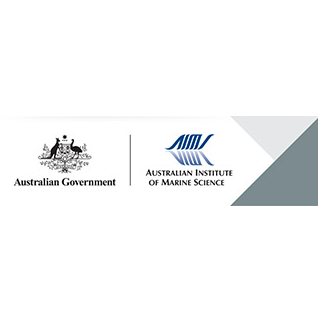Brief description
The chlorophyll monitoring under the Reef Plan Marine Monitoring Programme (Reef Plan MMP) is an extension from the Long-term Chlorophyll Monitoring Program, which was initiated by the Great Barrier Reef Marine Park Authority (GBRMPA) in December 1992 as a long-term water quality monitoring program. The chlorophyll monitoring has been managed by the Australian Institute of Marine Science since 1999 and is an important part of the AIMS water quality research and monitoring activities. Since 2005, the Chlorophyll Monitoring is a component of the Reef Plan Marine Monitoring Program, a responsibility of the GBRMPA under the Reef Water Quality Protection Plan. Sample analysis and data management has been undertaken by AIMS. The Great Barrier Reef (GBR) is the largest contiguous coral reef ecosystem in the world. The biological productivity of the GBR is supported by nutrients (e.g. nitrogen, phosphorus, silicate, iron) supplied from a number of sources, including upwelling from the Coral Sea, rainwater, nitrogen fixation by cyanobacteria and runoff from the adjacent catchment. Freshwater runoff is the largest source of new nitrogen to the GBR, however, the nutrients used by GBR marine primary producers (phytoplankton, benthic algae, seagrasses and mangroves) come predominantly from recycling of nutrients already in the system. Water quality is one of the most important factors determining the long-term health of the Great Barrier Reef (GBR). Increased nutrient availability, for example from human activity (e.g. agricultural runoff, soil erosion, discharges of sewage and aquaculture waste) usually leads to an increase in chlorophyll concentrations in coastal waters because of increased phytoplankton biomass. Phytoplankton can rapidly deplete nutrients to levels which would be difficult to sample and analyse directly. Concentrations of the plant pigment chlorophyll a (occurs in all marine phytoplankton) are a useful proxy indicator of the amount of nutrients incorporated into phytoplankton biomass. Chlorophyll a is today the most commonly used parameter for the monitoring of phytoplankton biomass and nutrient status, as an index of water quality. The data can be downloaded Data have been used for the e-Atlas: http://e-atlas.org.au/content/water-column-chlorophyllLineage
Maintenance and Update Frequency: notPlannedNotes
CreditSkuza, Michele (Point Of Contact)
Skuza, Michele (Custodian)
Modified: 23 06 2025
text: westlimit=143.0; southlimit=-26.0; eastlimit=153.5; northlimit=-11.0
User Contributed Tags
Login to tag this record with meaningful keywords to make it easier to discover
Sample collection method manual for chlorophyll monitoring program
local : \\pearl\rwqpp\Community monitoring\Community manuals\Community Chlorophyll Manual V6-Apr2009.pdf
Chlorophyll SOP
local : Z:\methods\Chlorophyll Sampling Quickguide.docx
Fluorometric method for analysing chlorophyll in seawater
local : \\pearl\rwqpp\methods\NEW METHODS COLLECTION\chlorophyll\fluorometer method\Method for analysis of chlorophyll a in marine waters.pdf
Exposure of inner-shelf reefs to nutrient enriched runoff entering the Great Barrier Reef Lagoon: Post-European changes and the design of water quality targets: Wooldridge SA, Brodie JE and Furnas MJ (2006) Exposure of inner-shelf reefs to nutrient enriched runoff entering the Great Barrier Reef Lagoon: Post-European changes and the design of water quality targets. Marine Pollution Bulletin 52: 1467-1479.
local : articleId=7293
A guide to the reef monitoring database. Long term monitoring of the Great Barrier Reef. Standard operational procedure No. 5: Baker VJ and Coleman GJ (2000) A guide to the reef monitoring database. Long term monitoring of the Great Barrier Reef. Standard operational procedure No. 5. SOP 5. Australian Institute of Marine Science. 72 p.
local : articleId=5818
Are increased nutrient inputs responsible for more outbreaks of crown-of-thorns starfish? An appraisal of the evidence: Brodie JE, Fabricius KE, De'ath AG and Okaji K (2005) Are increased nutrient inputs responsible for more outbreaks of crown-of-thorns starfish? An appraisal of the evidence. Marine Pollution Bulletin 51:266-278.
local : articleId=6904
e-Atlas Water column chlorophyll
uri :
http://e-atlas.org.au/content/water-column-chlorophyll![]()
Spatial and temporal patterns of near-surface chlorophyll a in the Great Barrier Reef lagoon: Brodie JE, De'ath AG, Devlin MJ, Furnas MJ and Wright M (2007) Spatial and temporal patterns of near-surface chlorophyll a in the Great Barrier Reef lagoon. Marine and Freshwater Research 58: 342-353.
local : articleId=7394
Three lines of evidence to link outbreaks of the crown-of-thorns seastar Acanthaster planci to the release of larval food limitation: Fabricius KE, Okaji K and De'ath AG (2010) Three lines of evidence to link outbreaks of the crown-of-thorns seastar Acanthaster planci to the release of larval food limitation. Coral Reefs 29: 593-605.
local : articleId=8530
CSV Data Download
Monitoring chlorophyll in the Great Barrier Reef lagoon: trends and variability: Brodie JE, Furnas MJ, Stevens ADL, Trott LA, Pantus F and Wright M (1997) Monitoring chlorophyll in the Great Barrier Reef lagoon: trends and variability. 1: 797-802. In: Proceedings of the 8th International Coral Reef Symposium, Panama, 24-29 June 1996. Smithsonian Tropical Research Institute.
local : articleId=1205
AIMS Chlorophyll monitoring
uri :
https://www.aims.gov.au/docs/data-centre/chlorophyllmonitoring.html![]()
- global : eb16c150-c7b4-11dc-b99b-00008a07204e
- URI : eatlas.org.au/data/uuid/eb16c150-c7b4-11dc-b99b-00008a07204e



